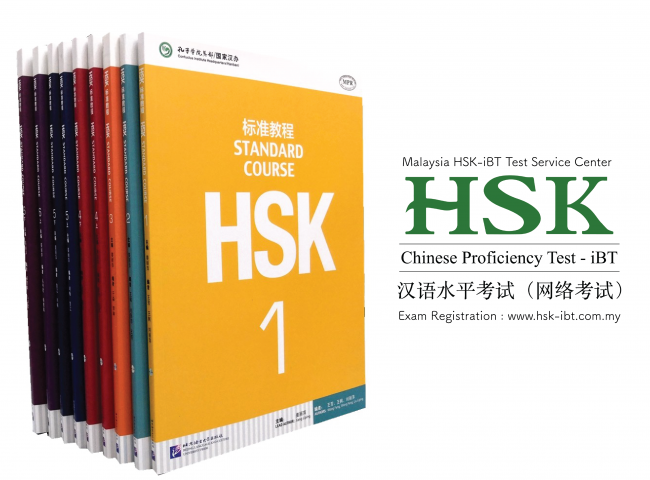Chinese Tests & Service
Chinese Proficiency Test (HSK)
aka Hanyu Shuiping Kaoshi 汉语水平考试

About Chinese Proficiency Test (HSK)
Chinese Proficiency Test, or Hanyu Shuiping Kaoshi (HSK) is an international standardised examination
that tests and rates Chinese language proficiency.
It assesses non-native Chinese speakers’ abilities in using the Chinese language in their daily, academic and professional lives.
HSK consists of six levels, namely HSK (Level I), HSK (Level II), HSK (Level III), HSK (Level IV), (HSK Level V), (HSK Level VI)
The levels of the HSK correspond to the level of the Chinese Language Proficiency Scales for Speakers of Other Languages (CLPS) as follows:
- Test takers who are able to pass the HSK (Level I) can understand and use very simple Chinese words and phrases, meet basic needs for communication and possess the ability to further their Chinese language studies.
- Test takers who are able to pass the HSK (Level II) have an excellent grasp of basic Chinese and can communicate in simple and routine tasks requiring a simple and direct exchange of information on familiar and routine matters.
- Test takers who are able to pass the HSK (Level III) can communicate in Chinese at a basic level in their daily, academic and professional lives. They can manage most communication in Chinese when traveling in China.
- Test takers who are able to pass the HSK (Level IV) can converse in Chinese on a wide range of topics and are able to communicate fluently with native Chinese speakers.
- Test takers who are able to pass the HSK (Level V) can read Chinese newspapers and magazines, enjoy Chinese films and plays, and give a full-length speech in Chinese
- Test takers who are able to pass the HSK (Level VI) can easily comprehend written and spoken information in Chinese and can effectively express themselves in Chinese, both orally and on paper.
- The new HSK follows the principle of “test-teaching correlation”, bases the design of the test on the current trends in international Chinese language training, and is closely related to textbooks. The purpose of the test is to “promote training through testing” and “promote learning through testing”.
- The new HSK emphasizes the objectivity and accuracy of the evaluation and stresses the learners’ actual Chinese language abilities.
- The new HSK sets clear test objectives to allow the test takers to be able to improve their Chinese language abilities in a systematic and efficient way.
- Paper-based Test
- Paper-based examination is having the examination conducted by using traditional method : Paper and Pen in Test Site.
- Internet-based Test
- Internet-based examination is having the examination conducted on a Computer that is connected to the Internet in Test Site.
- Home-based Test
- Home-based examination is having the examination conducted on a test-taker’s own Computer that is connected to the Internet through the Exam App at test taker’s home.
- A reference for an educational institution’s decision-making concerning recruiting students, assigning students to different classes, allowing students to skip certain courses and granting students academic credits.
- A reference for employers’ decision-making concerning the recruitment, training and promotion of test takers.
